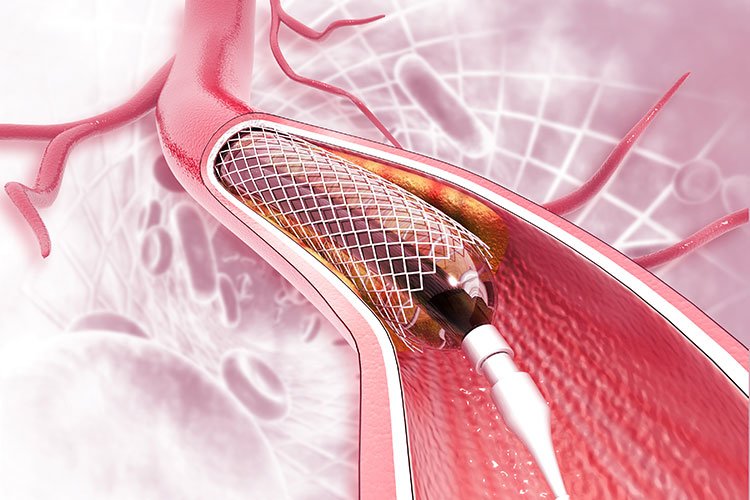A small tube, called a stent, is often used by cardiology doctor in Delhi to keep the arteries open for a person having a heart attack so that blood will flow properly into the heart. Cardiologists say this treatment saves lives and gives fast relief from future heart problems. However, as in every other medical procedure, there are benefits and drawbacks of using a stent. This article shall guide one to understand the pros and cons of using stents in heart attack treatment so that decisions can be made promptly.
Advantages of getting a stent during heart attack treatment
Improved Blood Flow
Most of the time, heart attacks occur due to blockage in one of the arteries that supply blood to the heart. Hence, because of blockage, no blood will pass to the heart, which is very dangerous. A stent is a small mesh-like tube that the surgeon inserts in an artery, blocking the flow of blood.
As soon as it is in place, the ‘stent’ acts as a backbone that holds the opened artery and allows blood to pass through once more. With this, the heart is again supplied with oxygen and nourishment needed for proper working—the reason for quick recovery and minimal chance of a second heart attack.
Minimally Invasive Heart Attack surgery
A minimally invasive procedure is the kind of medical treatment not entitled to large incisions or big surgery. The surgeons will make a very small incision or sometimes even a needle. There is less pain, quick recovery, and not-so-long stays in the hospital. It is normally done by surgeons who make a small incision in the leg or arm to insert a thin tube through which they can put a stent into the heart artery, thereby avoiding the opening of the chest cavity.
Quick Relief from the disease
A stent can quickly improve your condition after a heart attack. The stent restores blood flow to your heart by opening the blocked artery. It implies that chest pain and other symptoms can subside quickly, perhaps immediately after the surgery. You won’t have to wait long to see results, which is fantastic because it signifies your heart is getting enough oxygen to stay healthy. This fast relief can make a big difference in how you feel and how well your heart works.
Imrpved Life
A better quality of life means that, in comparison to before the implantation of the stent, patients will feel better and lead their lives with greater ease. Most of these patients have fewer episodes of chest pain, feel more energised, and can easily carry out their routine activities without thinking of cardiac troubles. These everyday living facets are manageable, along with family time, socialising, hobbies, or jobs. It’s simply a stent that will let people live their lives without fear of another heart attack.
Less Dependence on Medicines
With a stent in your heart, as it is inserted for the free flow of blood, you might not have to depend on too many drugs in the long run. The medicines are usually prescribed for relieving symptoms associated with your heart and for averting long-term adversities associated with them. A stent manages to keep open your arteries, thereby increasing blood received by your heart; also, medications may not be needed as much. This can simplify your life—not having to remember to take so many medicines each day—while saving you money on prescriptions.
Disadvantages of stent for heart attack
Risk of complications
Even though stent placement is generally considered safe, there are certain hazards. Sometimes, the place where the stent is implanted bleeds or becomes infected. There is also a possibility that a person will have a negative reaction to the dye used during the operation. While these issues are uncommon, they might occur and require additional treatment. Knowing the risks may help you be better prepared and make informed decisions with your doctor.
Restenosis
Restenosis is when one of the arteries opened with a stent narrows again. Scar tissue grows around a stent. This scar tissue can accumulate and cause the artery to narrow again, just as before the stent. It can limit blood flow and trigger symptoms such as chest discomfort. While not everyone experiences this, doctors keep an eye out for it and may use specific stents with drugs to avoid it.
Blood Clots
Blood clots are aggregations of blood that form from liquid to a gel or semisolid. Sometimes clots grow inside your blood vessels without an injury and are harmful. Those clots can block blood flow to the heart, lungs, brain, or other important organs. A clot, if formed inside or near the stent placed for a heart attack, will block the flow of the artery again, causing a heart attack.
Allergic reactions
Allergic reactions to stents may be precipitated whenever the body of a person does not respond positively to the composition of the stent or its response to drugs administered to it and may further cause complications such as rashes, irritation, or even swelling around the stent. In critical situations, it may bring about shortness of breath or a fast heartbeat. Doctors are cautious of this and thus often carry out allergy tests before treatment and then apply substitute materials where necessary. If after being fitted with a stent one develops any abnormal signs, he should immediately report to his doctor for the proper therapy to be administered.
Stents can be extremely beneficial for patients recovering from heart attacks because they keep their arteries open and improve blood flow to the heart. This can alleviate symptoms while lowering the chance of future cardiac problems. However, there are certain risks to consider, such as the likelihood of problems or the necessity for continued medicines. It is necessary for patients and cardiologist in Delhi to thoroughly consider these advantages and cons while deciding on treatment. Overall, stents have improved the lives of many heart attack patients








